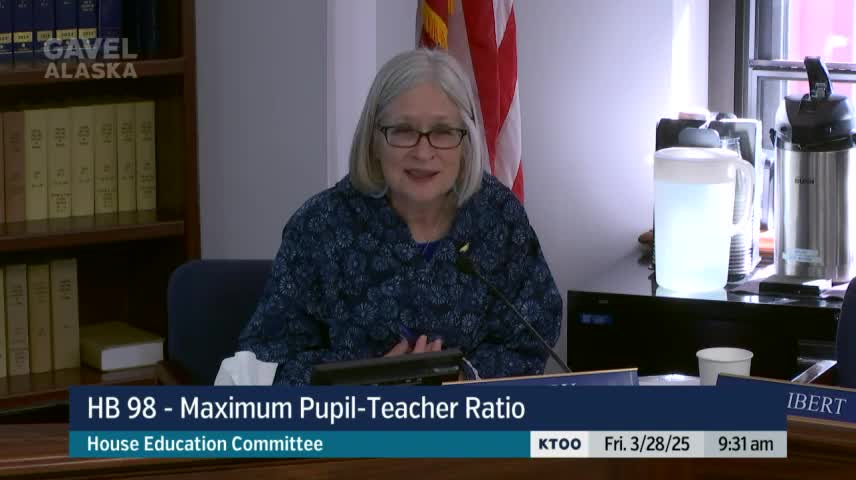Caroline Storm advocates for increased education funding during public testimony
March 28, 2025 | 2025 Legislature Alaska, Alaska
This article was created by AI summarizing key points discussed. AI makes mistakes, so for full details and context, please refer to the video of the full meeting. Please report any errors so we can fix them. Report an error »

Alaska's education system is facing critical challenges as discussions around funding and class sizes take center stage in a recent House Education Committee meeting. Caroline Storm, the executive director of the Coalition for Education Equity, emphasized the urgent need for adequate funding in public education, highlighting that the current bill under consideration is a reflection of long-standing issues in the state's educational landscape.
Storm pointed out that the lack of sufficient funding over the past decade has led to increased class sizes and declining student preparedness, as evidenced by developmental profiles administered in kindergarten. She argued that the correlation between class size and academic outcomes is clear, noting that as class sizes grow, test scores have fallen. Storm referenced successful strategies from other states, such as Mississippi, which improved their National Assessment of Educational Progress (NAEP) scores by investing heavily in pre-kindergarten programs.
The committee's discussions also underscored the importance of funding as a means to enhance educational performance. Representative Fields echoed Storm's sentiments, stating that the intent of the bill is to identify necessary funding to achieve optimal class sizes conducive to learning. He highlighted the need for targeted support for disadvantaged students, advocating for smaller class sizes in early elementary grades to foster better educational outcomes.
As the committee moves forward, the focus remains on addressing the funding gaps that have persisted in Alaska's education system. The implications of these discussions are significant, as they could shape the future of educational equity and student success across the state. The committee's next steps will be crucial in determining how effectively they can respond to these pressing challenges.
Storm pointed out that the lack of sufficient funding over the past decade has led to increased class sizes and declining student preparedness, as evidenced by developmental profiles administered in kindergarten. She argued that the correlation between class size and academic outcomes is clear, noting that as class sizes grow, test scores have fallen. Storm referenced successful strategies from other states, such as Mississippi, which improved their National Assessment of Educational Progress (NAEP) scores by investing heavily in pre-kindergarten programs.
The committee's discussions also underscored the importance of funding as a means to enhance educational performance. Representative Fields echoed Storm's sentiments, stating that the intent of the bill is to identify necessary funding to achieve optimal class sizes conducive to learning. He highlighted the need for targeted support for disadvantaged students, advocating for smaller class sizes in early elementary grades to foster better educational outcomes.
As the committee moves forward, the focus remains on addressing the funding gaps that have persisted in Alaska's education system. The implications of these discussions are significant, as they could shape the future of educational equity and student success across the state. The committee's next steps will be crucial in determining how effectively they can respond to these pressing challenges.
View full meeting
This article is based on a recent meeting—watch the full video and explore the complete transcript for deeper insights into the discussion.
View full meeting
